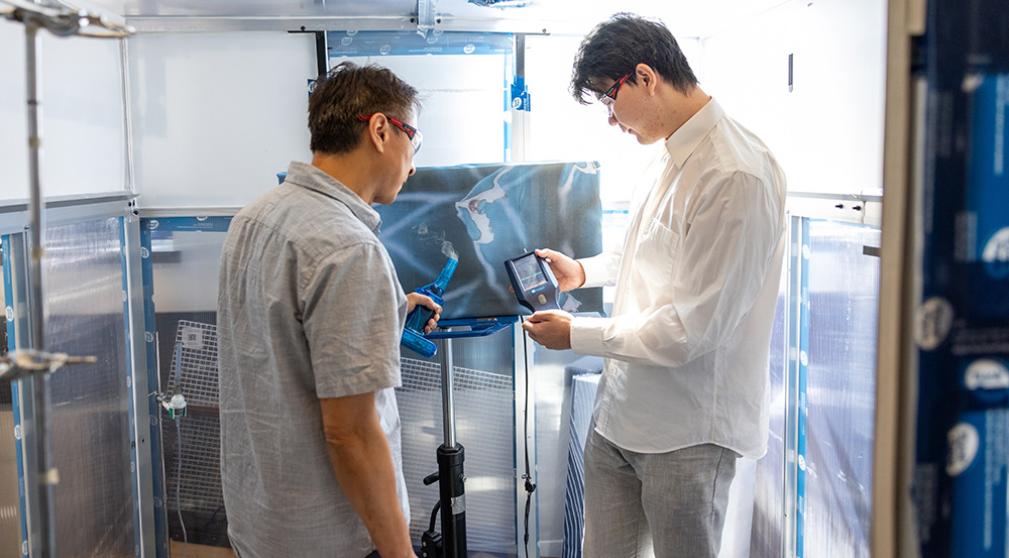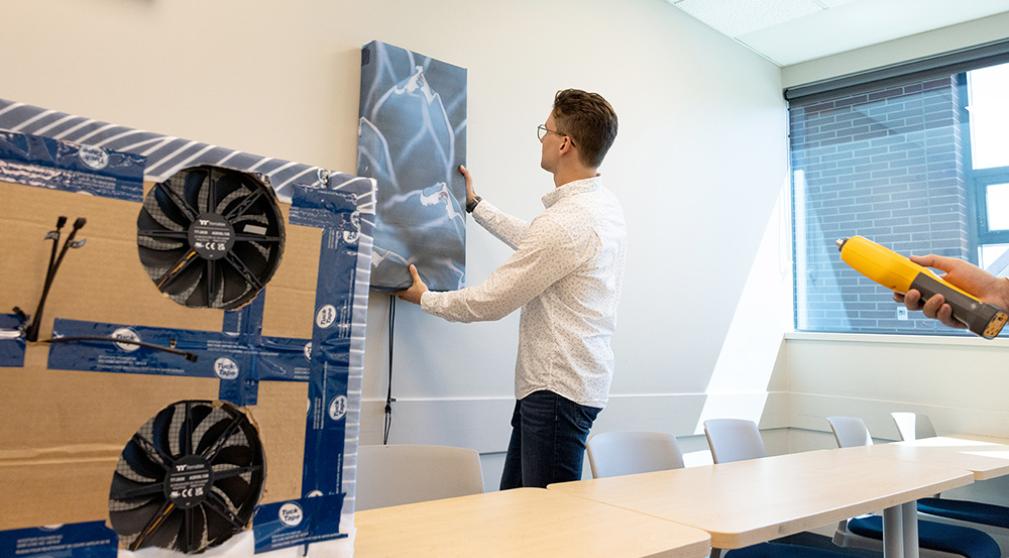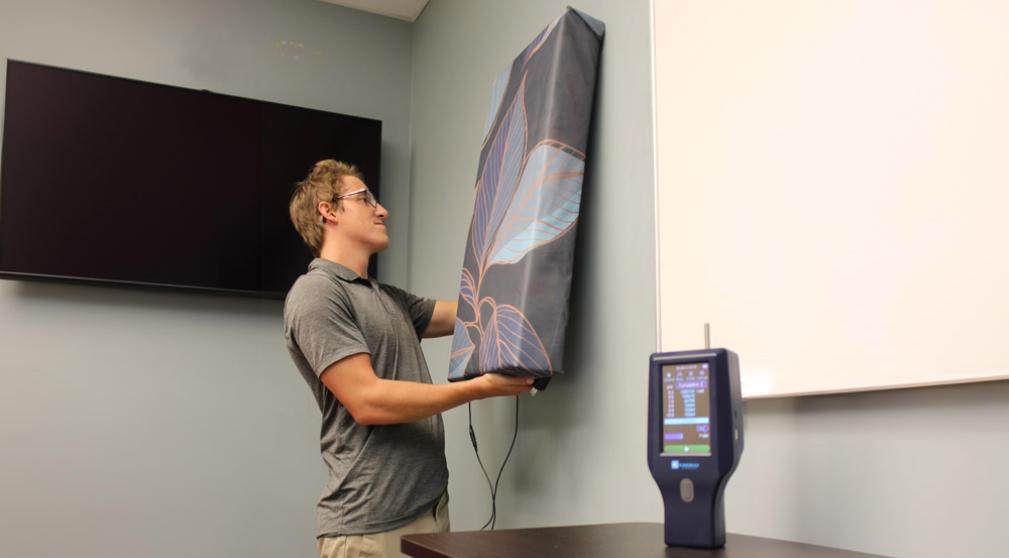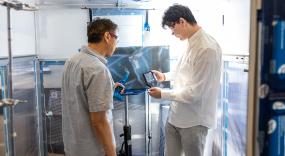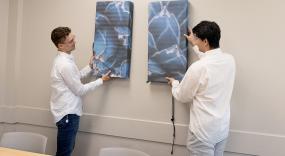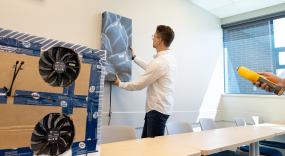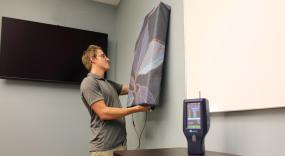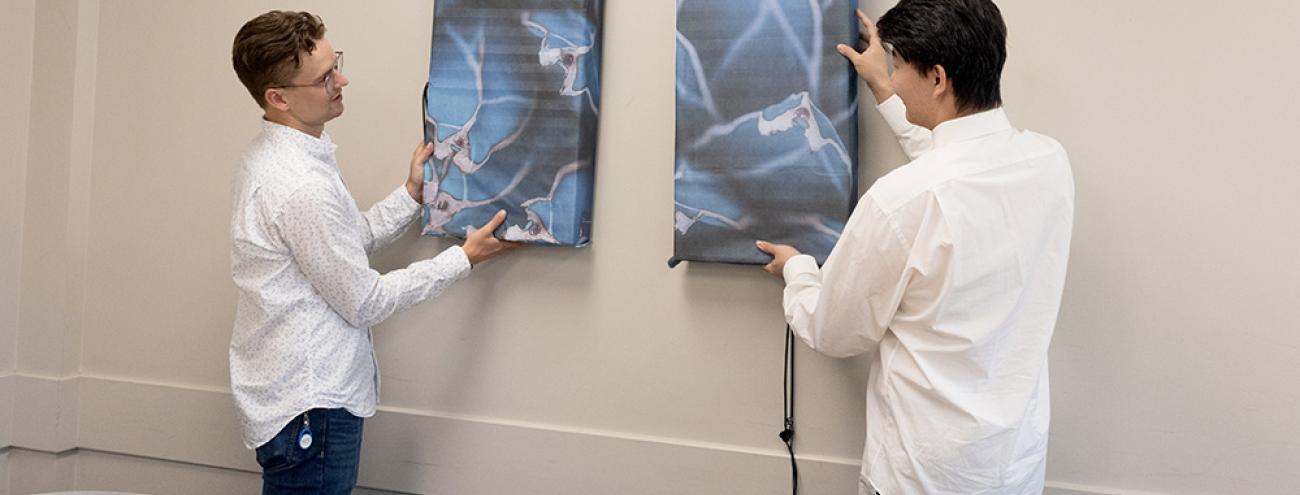
Clean UBC Okanagan’s Air through Wall-mount Air Filtering Devices
A pioneering project seeks to improve indoor air quality through the use of innovative wall-mounted Aerosol Removing Tapestry (ART) devices. These units effectively reduce harmful airborne particles and pathogens while improving energy efficiency. The project evaluates their performance, with potential applications in diverse settings such as classrooms, homes, and hospitals, extending beyond UBC Okanagan.
Project Team
Faculty lead: Sunny Li, Professor, School of Engineering, Department of Mechanical Engineering
Staff lead: Roger Bizzotto, Associate Director, Facilities Management
Co-lead: Jonathan Little, Professor, Faculty of Health and Social Development, School of Health and Exercise Science
Co-lead: Jake Winkler, Research Coordinator, Faculty of Health and Social Development, School of Health and Exercise Science
Co-lead: Martin Gibb, Manager of Engineering and Utilities Services, Facilities Management
Challenges of Indoor Air Quality in University Settings
Poor indoor air quality (IAQ) is a significant concern, as it is directly associated with negative health outcomes for individuals. Pathogenic microorganisms, smoke particulates, and chemical pollutants pose serious risks to health. University settings, such as UBC Okanagan, are particularly vulnerable to poor IAQ due to the high density of people and the considerable time spent in enclosed spaces. The need to improve IAQ through effective and energy-efficient technology is more critical than ever, especially as we continue to face the seasonal spread of respiratory illnesses like COVID-19, RSV, influenza, and the common cold, as well as severe wildfire smoke pollution exacerbated by climate change.
Development of the Aerosol Removing Tapestry (ART)
Over the past two years, the Eminence Cluster for Excellence in Airborne Disease Transmission Research Cluster (ADTRC) has partnered with the BC-based company C-Polar Technologies, Interior Health and the Ministry of Health to develop an innovative air filtration device known as the Aerosol Removing Tapestry (ART). This device, cleverly disguised as a wall painting, utilizes C-Polar’s positively charged filter media and quite computer fans to reduce airborne particulate and aerobic bacteria.
Impact and Broader Implications of the CLL Air Quality Project
The CLL project will have measurable impacts on various air quality parameters, including particulate matter concentrations, viral and bacterial loads, smoke levels, and energy consumption. These metrics will be used to assess whether the introduction of a wall-mounted ART filter is an innovative and energy-efficient solution to improving the resilience of indoor environments, such as university campuses, against infection spread and smoke inhalation. Beyond the immediate health and environmental benefits for UBC Okanagan, the findings from this project have broader implications for all indoor settings. If successful, this work has the potential benefit IAQ management in diverse indoor environments, including residential homes and high-occupancy locations such as long-term care facilities.
Related Publications

